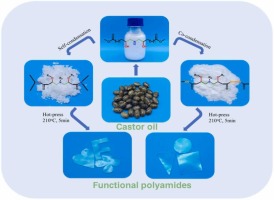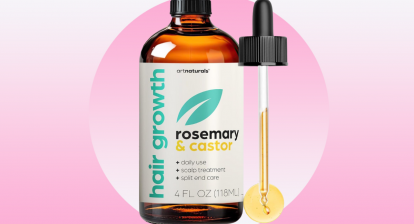Castor Oil-Based Biopolymer Market to reach over USD 3140.03 million by the year 2031 – Exclusive Report by InsightAce Analytic
InsightAce Analytic Pvt. Ltd. announces the release of a market assessment report on the “Global Castor Oil-Based Biopolymer Market Size, Share & Trends Analysis Report By End-User (Automotive, Solar, Household Appliances, Textile, Oil And Gas), Polymer Type (Bio-Polyamides (Bio-Polyamide 6, Bio-Polyamide 10 And 11), Bio-Polyurethane) And Foam (Pellets, Yarns)- Market Outlook And Industry Analysis 2031”
The global castor oil-based biopolymer market is estimated to reach over USD 3140.03 million by 2024-2031, exhibiting a CAGR of 16.06% during the forecast period.
Request for free Sample Pages: https://www.insightaceanalytic.com/request-sample/1693
Castor oil and its derivatives are multifunctional compounds widely utilized in producing paints, lubricants, coatings, cosmetics, medicines, and other goods. These derivatives are gaining prominence due to their superior chemical characteristics. Major ingredient manufacturers are introducing castor oil-based compounds to capitalize on green chemical market prospects.
Furthermore, increased research and development activities and increased investment are predicted to improve castor oil-based biopolymer market development. Because of outstanding properties such as being a very breathable, ultra-light, and super stretch product, the use of bio-polyamides in various apparel companies is gaining traction.
Additionally, the global castor oil-based biopolymer market growth is likely to profit from the expanding home appliances industry in developing nations due to rising disposable income and an increase in nuclear families, among other factors.
List of Prominent Players in the Castor Oil-Based Biopolymer Market:
• EOS GmbH
• AWAKE CONCEPT
• NEUBAU EYEWEAR gmbh
• Lanxess AG
• BIO-FED
• Asahi Kasei Corporation
• Arkema
• Evonik Industries AG
• BASF SE
• EMS-Chemie Holding AG
• Solvay S.A.
• Toray Industries, Inc.
• UNITIKA LTD.
• RadiciGroup
• Fulgar SpA
• DSM
• DuPont de Nemours, Inc.
• Mitsui Chemicals Inc.
• Nexis Fibers
• VAUDE Sport GmbH & Co. KG
Market Dynamics:
Drivers-
Castor oil and its derivatives have significant advantages over other vegetable oils due to their unique fatty acid composition. Cotton, coconut, soy, corn, and rapeseed oil applications are primarily limited to food reasons. Regarding physicochemical qualities, castor oil derivatives are renewable, natural, and adaptable.
As a result, these products are selected as a key raw material in a variety of applications, including lubricants, oleo-chemicals, medical, cosmetics, pharmaceuticals, and bio-energy. Because of the growing relevance of green chemicals worldwide, the market is likely to rise steadily in the future.
Challenges:
Castor oil is a feedstock for the manufacture of various derivatives. Temperature, light, rainfall, soil properties, latitude, and altitude are all factors that influence castor oil yield. The yield determines the price of castor oil. The volatile pricing has an impact on downstream production and demand for castor oil derivatives, lowering profit margins. Yet, the fast adoption of modern agricultural practices supported by government legislation will boost the oil business in the near future.
Regional Trends:
The Asia Pacific castor oil-based biopolymer market is expected to account for a major market share in terms of revenue. It is projected to grow at a high CAGR in the near future. India has become a manufacturer and exporter of castor oil and its derivatives, such as 12-hydroxy stearic acid, dehydrated castor oil, castor wax, and undecylenic acid, as a result of the number of castor seeds.
India’s top export destinations are China, the United States, and the European Union. According to The Solvent Extractors Association of India, China accounts for over 40% of Indian castor oil exports, followed by Europe (30-35%). Europe was the second-largest user of castor oil derivatives. In the near future, the market is likely to rise due to increased adoption and favorable government policies surrounding the usage of bio-based chemicals.
Curious about this latest version of the report? @ https://www.insightaceanalytic.com/enquiry-before-buying/1693
Recent Developments:
• In October 2022, Toray Industries, Inc. developed the “Ultrasuede nu” polyester-based headrest cover. The scrim, elastomer, and ultra-fine fibers components comprise the cover. The elastomer is made of a polyurethane material based on castor oil.
Segmentation of Castor Oil-Based Biopolymer Market-
By End-User-
• Automotive
• Solar
• Household Appliances
• Textile
• Oil and Gas
• Others
By Polymer Type-
• Bio-Polyamides
o Bio-Polyamide 6
o Bio-Polyamide 10 and 11
• Bio-Polyurethane
• Others
By Form-
• Pellets
• Yarns
• Others
By Region-
North America-
• The US
• Canada
• Mexico
Europe-
• Germany
• The UK
• France
• Italy
• Spain
• Rest of Europe
Asia-Pacific-
• China
• Japan
• India
• South Korea
• Southeast Asia
• Rest of Asia Pacific
Latin America-
• Brazil
• Argentina
• Rest of Latin America
Middle East & Africa-
• GCC Countries
• South Africa
• Rest of the Middle East and Africa
For More Customization @ https://www.insightaceanalytic.com/report/castor-oil-based-biopolymer-market/1693
Contact Us:
InsightAce Analytic Pvt. Ltd.
Tel.: +1 718 593 4405
Email: info@insightaceanalytic.com
Site Visit: www.insightaceanalytic.com
Follow Us on LinkedIn @ bit.ly/2tBXsgS
Follow Us On Facebook @ bit.ly/2H9jnDZ
About Us:
InsightAce Analytic is a market research and consulting firm that enables clients to make strategic decisions.
Our qualitative and quantitative market intelligence solutions inform the need for market and competitive intelligence to expand businesses.
We help clients gain a competitive advantage by identifying untapped markets, exploring new and competing technologies, segmenting potential markets, and repositioning products.
Our expertise is in providing syndicated and custom market intelligence reports with an in-depth analysis with key market insights in a timely and cost-effective manner.
This release was published on openPR.






